
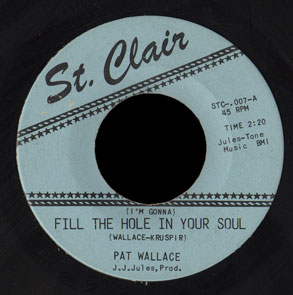 Based in the Pittsburgh area, Pat Wallace released many 45s, this one being more garage in style than most.
Based in the Pittsburgh area, Pat Wallace released many 45s, this one being more garage in style than most.
“Fill the Hole in Your Soul” is a straightforward come-on, but danceable and catchy for all that. The musicians must not have had any other song in mind for this session, as “C’mon and Work” is just the band vamping with Wallace chanting the title repeatedly. Not bad, though.
Pat tells me the band was Prince Valiant and the Knights, who had their own 45 on St. Clair, “Back Yard”/”Front Yard”, though Rick Sharp recalls playing on the session with his group the Sharades (see below). Songwriting credits are Pat Wallace and Jules Kruspir on “Fill the Hole”, and Rick Sharp – Jules Kruspir on the flip, production by J.J. Jules.
The St. Clair label is famous for releasing the Swamp Rats’ most beserk 45s.
Thank you to Pat Wallace for the photos seen here of his early group, the Shadows. Please do not reproduce these images without permission.

Rick Sharp of the Sharades provides his recollection of how he came to record with Pat Wallace on this single:
Jules Kruspir managed my first Pittsburgh, PA band, The Vel Mars. We knew Jules for a lot of years, from 1963 to the late seventies (he managed the Marcels). Not quite sure how we met him though. He used to invite us over to his house to rehearse every month or so and seemed to have a genuine interest in our band, The Vel-Mars.
We were a guitar band, a la The Ventures, and were playing local school dances. Jules said he knew all the right industry people and we could go places. Actually nothing happened until he signed Bob Stupec to do a Christmas song, “Jake The Flake”. This was a huge production number, full orchestra (Jim Drake conducting & arranging), backing vocals by the Ray Charles Singers (“Love Me With All Your Heart” fame) and recorded at Bell Sound Studios in NYC. The tracks were absolutely beautiful!
But, Bobby (Bobby Star) couldn’t sing. It took 157 takes to complete the lead vocal track. I remember, Phil Ramone was the engineer. Well, we were to record the back side “Jingle Bells”. Studio time was running out, we cut our song in 1 1/2 takes. We broke a guitar string, but they spliced the tape & our record turned out great. The record was released a few weeks later, became the National Record Mart “Pick of the Week” and was played in NRM commercials for a few weeks. Picked up a review in Billboard (Jules had a full page ad), but the record never took off. Too bad. Bobby Star quit recording and went to Vegas and opened a casino.
In 1965, our Vel-Mars band broke up and I auditioned for a club band in Beaver Falls, PA. The leader was Gary Glenn. The group was Gary Glenn and the Jeweltones. The Jeweltones had departed and left Gary without a band, for which I was auditioning & was ultimately hired for. They had a local record out, “Goodnight My Love”, on the Cove label. Great record. I wrote a couple of songs for Gary that were recorded at Jerree Records in Beaver Falls, PA. “Always So True” b/w “What Do You Want”, released early 1966, but went nowhere. The original Jeweltones were later to become the Jaggerz of “The Rapper” fame.
I left Gary Glenn in mid 1966 & formed the Sharades. We were a cover band [but] with a lot of original songs. Jules expressed an interest in us again and asked if we would do a demo session at Glen Campbell Studios in Pittsburgh, PA. We did the session but nothing came out of it. A few of the songs were good though. Jules later asked us to back up Pat Wallace for a couple of songs at the same studio. We did and that’s where “Gonna Fill The Hole” & “Come On & Work” came from. And yes, “Come On & Work” was nothing more than a “B” vamp.
In 1966,Jules opened a record store in the Southland shopping center (Pat Wallace worked there) and I took a job with Kleins One Stop (Itzy Records) heading up their oldies department. Jules bumped into The Fantastic DeeJays (who had some local Music For Young Lovers songs for Terry Lee). He changed their name to the Swamp Rats and recorded “Louie Louie” & released it on his St. Clair label. (Jules lived in a community named Upper St. Clair).
Also in 1966, Jules picked up a group named the Dynatones. They had recorded a record “And I Always Will” b/w “The Fife Piper”. The local DJs flipped it over & the record went to Number 1. HBR Records, who just recently started a pop records division, picked up national distribution. The record went all the way up the national charts. Then … HBR called for a album followup to the single. Jules took the Dynatones down to Glen Campbells studio & cut 10 or 12 absolutely terrible tracks. Truth is, Jules couldn’t produce & Glens’ studio (3 track Ampex) was nothing more than a reverb box. HBR Records rejected the cuts for the “Fife Piper” LP. They produced all the tracks in LA with studio musicians.
I continued on working at Kleins and with my band, the Sharades. We were working steady at local clubs when we decided to go into the studio on our own. Late 1966 we recorded “Only A Tear” b/w “It’s A Groovy Day” at Gateway Studios in Pgh, PA (Some of the Lou Christie hits were recorded there). Our session was quick…maybe 1 1/2 hours. We only recorded the two songs. The record was released on Fasicination Records which was my label. Kleins One Stop (my day job) became our distributor. I started college in January 1967 and played weekends with the band. By springtime Terry Lee had picked up the record & began playing it every night at 11:00 as the opening song for his “Music For Young Lovers” show segment. “Only A Tear” was the only record released by the Sharades. We continued on as a band until the mid-seventies. I recorded “Surfin’ USA – Pittsburgh, PA” b/w “Pipeline” in the mid-eighties with a new group – The Allegheny Surfers.
Rick Sharp

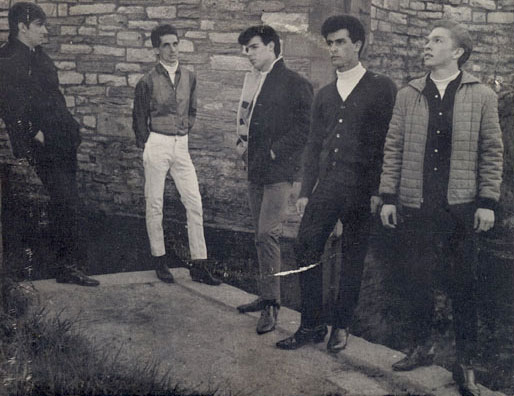
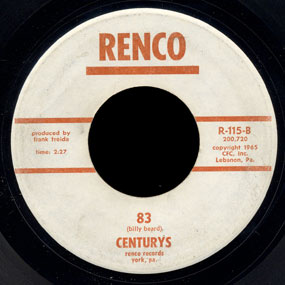
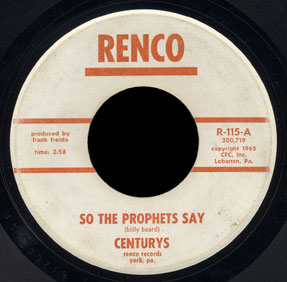
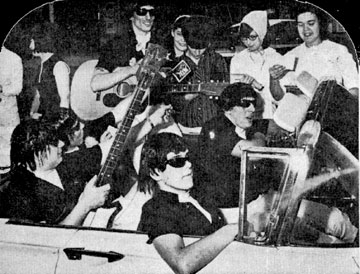
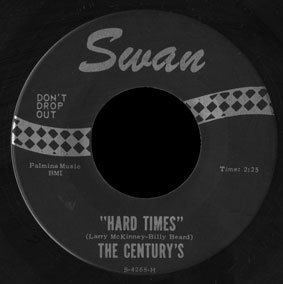
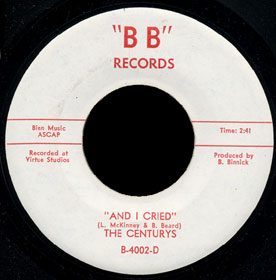
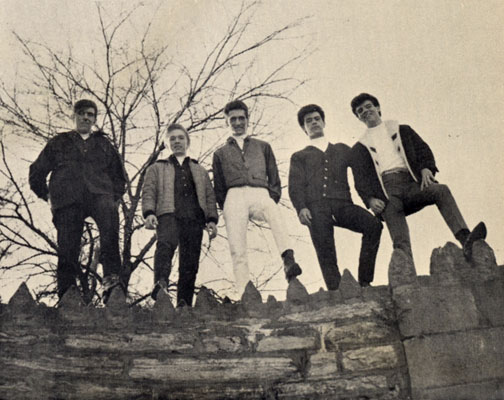
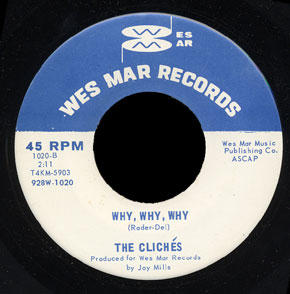
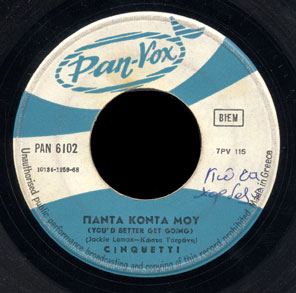
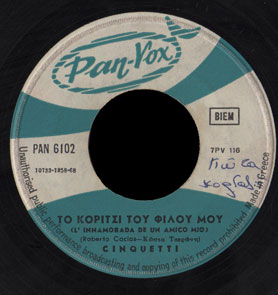
 I knew little about the Trademarks until drummer Jerry Warren’s son Zack commented below.
I knew little about the Trademarks until drummer Jerry Warren’s son Zack commented below.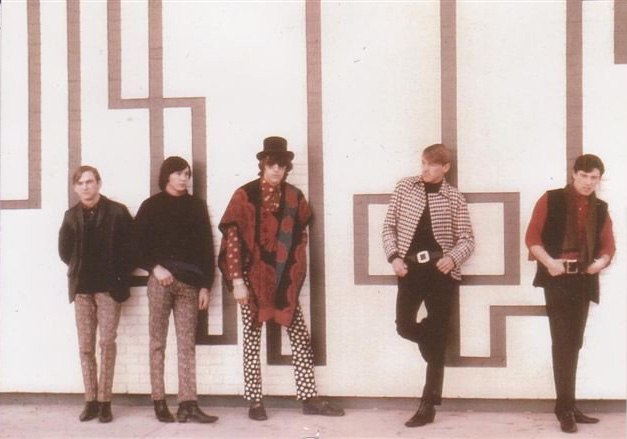
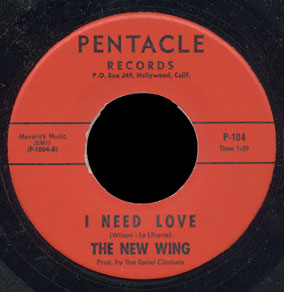 The New Wing was a singer by the name of Davy Peters backed by members of a group from Edmonton, Alberta, called the Sons of Adam.
The New Wing was a singer by the name of Davy Peters backed by members of a group from Edmonton, Alberta, called the Sons of Adam.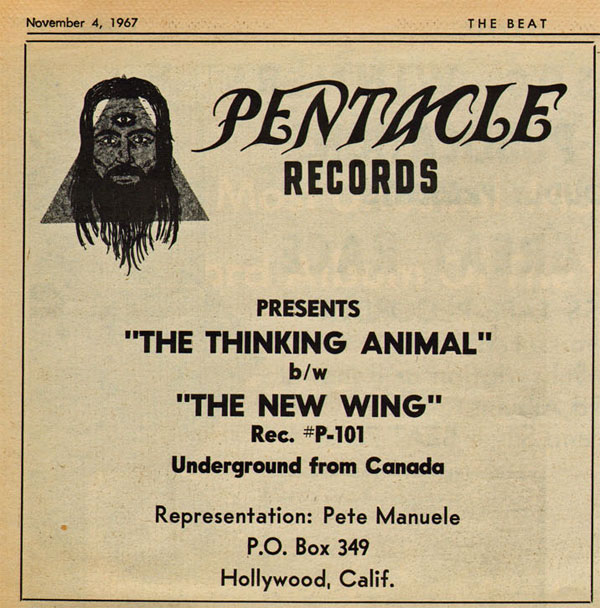

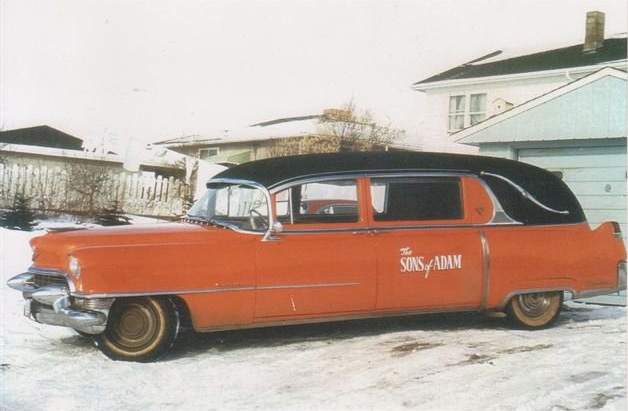
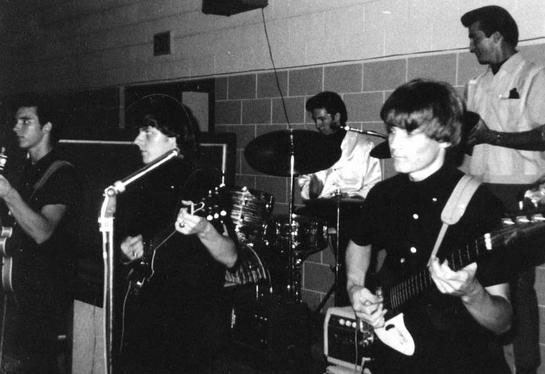
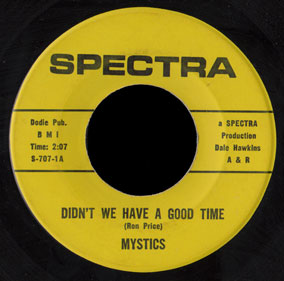 The Mystics came out of the Oak Cliff neighborhood of Dallas, Texas. Members were Ron Jobe vocals, David Mitchell bass, Robert Farris and Danny Fugate on guitars, and Glenn Struble on drums. Their original name was the Glorytones, and they often played the Heights Theater.
The Mystics came out of the Oak Cliff neighborhood of Dallas, Texas. Members were Ron Jobe vocals, David Mitchell bass, Robert Farris and Danny Fugate on guitars, and Glenn Struble on drums. Their original name was the Glorytones, and they often played the Heights Theater.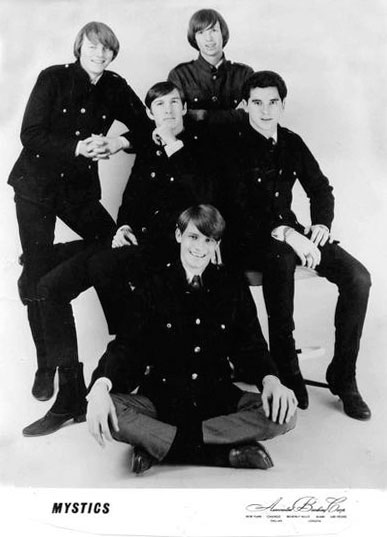 The 45 reached #1 on Dallas stations KLIF, KBOX (see survey
The 45 reached #1 on Dallas stations KLIF, KBOX (see survey 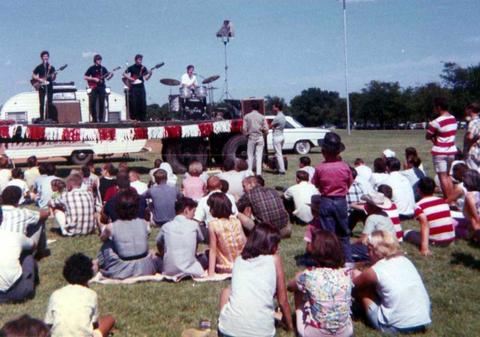
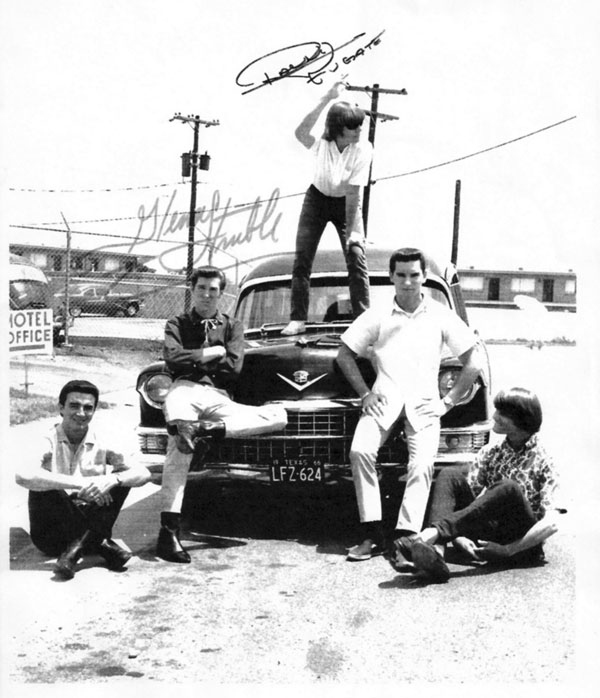
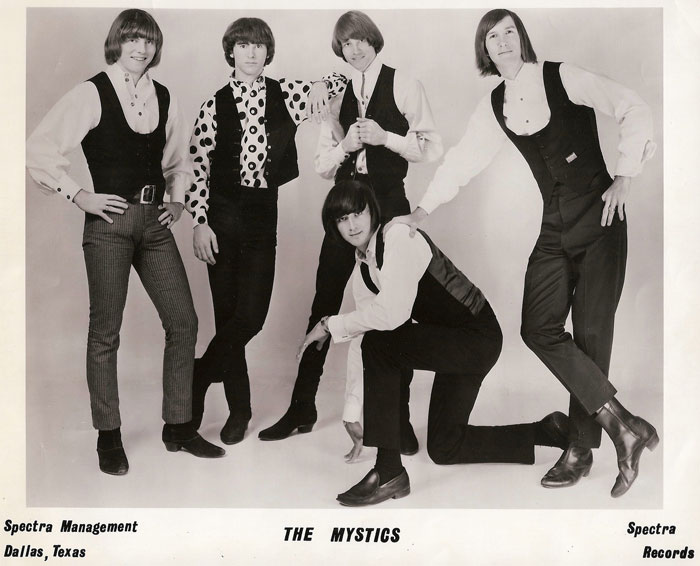
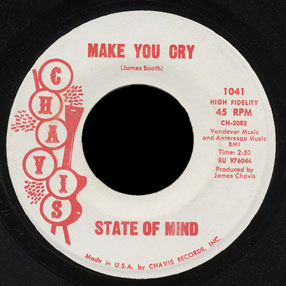 The State of Mind were from Wilmington, Delaware. “Move”, the first of their two 45s on the Chavis label, is their best, though “Make You Cry” isn’t far behind. Both have good guitar breaks, but while the solo on “Move” uses lots of echo, “Make You Cry” has a tougher attack. They sound almost like different bands, and I guessed the two 45s were recorded at least a year apart. “Goin’ Away” is a mellower song with good vocal harmonies.
The State of Mind were from Wilmington, Delaware. “Move”, the first of their two 45s on the Chavis label, is their best, though “Make You Cry” isn’t far behind. Both have good guitar breaks, but while the solo on “Move” uses lots of echo, “Make You Cry” has a tougher attack. They sound almost like different bands, and I guessed the two 45s were recorded at least a year apart. “Goin’ Away” is a mellower song with good vocal harmonies.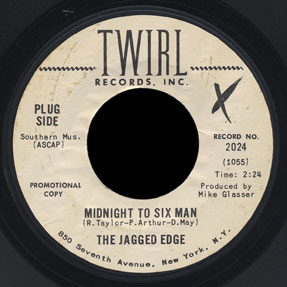 Supposedly recorded in California, but released on a NY label, with the band maybe from Ohio? That’s how different versions of the story go, which has to make the Jagged Edge one of the best ’60’s bands whose history was a mystery until recently.
Supposedly recorded in California, but released on a NY label, with the band maybe from Ohio? That’s how different versions of the story go, which has to make the Jagged Edge one of the best ’60’s bands whose history was a mystery until recently.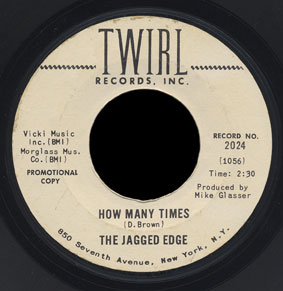 As Alan points out in a comment below, the Twirl label was started in Detroit. Harry Balk had formed Twirl and the publishing company Vicki Music and had a business partner, Irving Micahnik. They released about twenty singles on Twirl before Balk sold his share in Twirl and Vicki to Irving and formed the Impact label, which released some great 45s by the Human Beings and others. It seems that Irving Micahnik relocated the Twirl label to New York, where he resided, in 1965.
As Alan points out in a comment below, the Twirl label was started in Detroit. Harry Balk had formed Twirl and the publishing company Vicki Music and had a business partner, Irving Micahnik. They released about twenty singles on Twirl before Balk sold his share in Twirl and Vicki to Irving and formed the Impact label, which released some great 45s by the Human Beings and others. It seems that Irving Micahnik relocated the Twirl label to New York, where he resided, in 1965.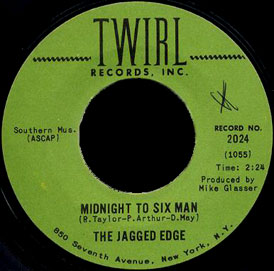 To make clear another confusing matter, this band was not the Jagged Edge from Brooklyn that released “You Can’t Keep a Good Man Down” / “How She’s Hurting Me” on Gallant in April of ’66, and then became the Off-Set, recording “Xanthia (Lisa)” for Jubilee in July of ’66. That band also did a version of “A Change Is Gonna Come” that went unreleased at the time.
To make clear another confusing matter, this band was not the Jagged Edge from Brooklyn that released “You Can’t Keep a Good Man Down” / “How She’s Hurting Me” on Gallant in April of ’66, and then became the Off-Set, recording “Xanthia (Lisa)” for Jubilee in July of ’66. That band also did a version of “A Change Is Gonna Come” that went unreleased at the time.